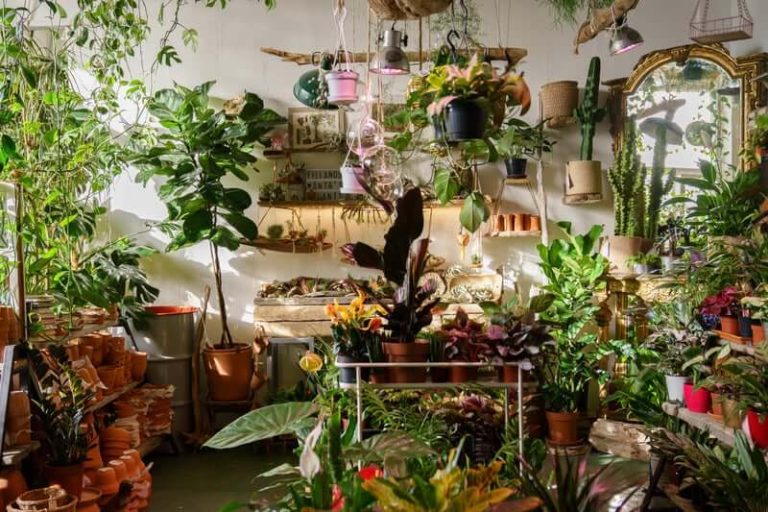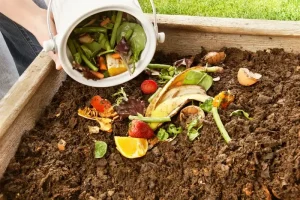Bringing nature inside through indoor gardening has become increasingly popular. It offers a unique opportunity to elevate the ambiance of living spaces, purify the air, and establish a calm and tranquil setting. Whether experienced or a beginner, indoor gardening provides numerous benefits and opportunities to connect with nature year-round.
The Benefits of Indoor Gardening
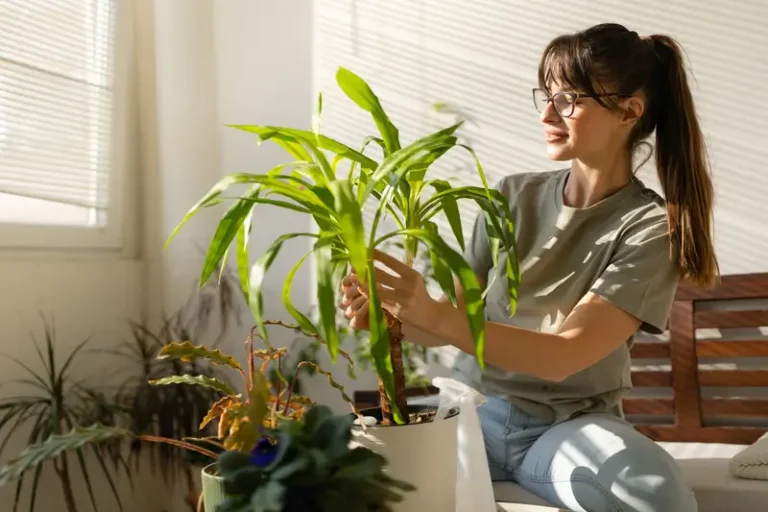
Indoor gardening offers unique advantages, making it a rewarding hobby for anyone. It enhances the aesthetic appeal of your living space, improves air quality, and reduces stress, creating a healthier and more serene environment.
Enhanced Air Quality
Plants can naturally cleanse the air by capturing toxins and emitting fresh oxygen as part of their biological processes. Incorporating indoor plants can significantly improve indoor air quality, reducing formaldehyde, benzene, and trichloroethylene pollutants.
Stress Reduction
Surrounding yourself with greenery has been proven to have a calming effect on the mind and body, helping to lower stress levels and create a more tranquil environment for relaxation. Caring for plants can be an incredibly therapeutic and satisfying experience, offering a deep sense of fulfillment and peace. Watching your plants flourish and grow beautifully due to your nurturing care can bring incredible empowerment and achievement.
Aesthetic Appeal
Indoor plants add aesthetic value to any space, creating a visually pleasing environment. They can complement your home decor and bring a touch of nature indoors. The beauty of these plants can inspire your creativity and enhance your living space.
Choosing the Right Plants for Indoor Gardening
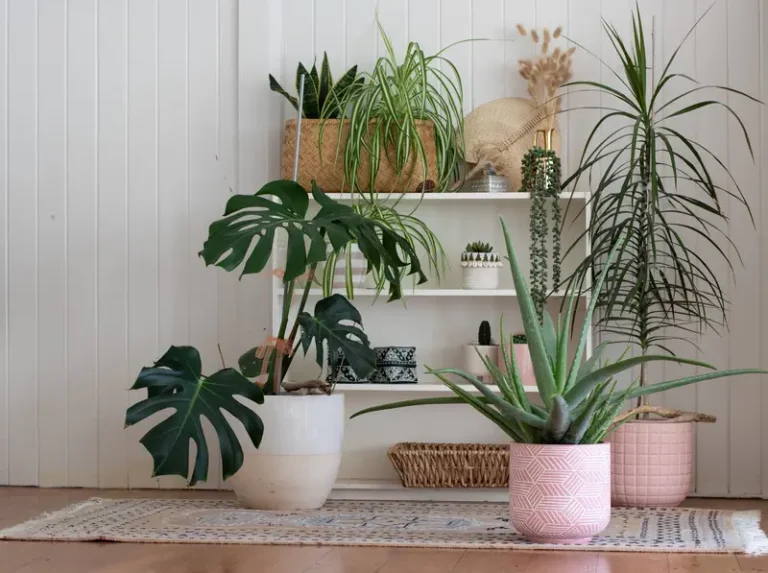
Choosing the appropriate plants is a crucial step for successful indoor gardening. When finalizing plants for your home, carefully consider factors such as light, temperature, and humidity, as they can significantly impact the health and growth of your indoor garden.
Low-Light Plants
Choosing low-light plants such as snakes, pothos, and ZZ plants is advisable in spaces with limited natural light. These exceptionally resilient plant varieties can flourish in environments with minimal light exposure. Additionally, they demand very little maintenance, making them an ideal selection for those seeking low-maintenance greenery.
High-Light Plants
If you have spaces with ample sunlight, consider high-light plants such as succulents, cacti, and fiddle-leaf figs. These plants flourish in bright light, adding a vibrant touch to your home.
Air-Purifying Plants
To optimize the air-purifying advantages, consider introducing spider plants, peace lilies, and Boston ferns into your indoor environment. These particular plant varieties are renowned for their exceptional capacity to effectively remove common indoor pollutants, thus enhancing the overall air quality.
Setting Up Your Indoor Garden
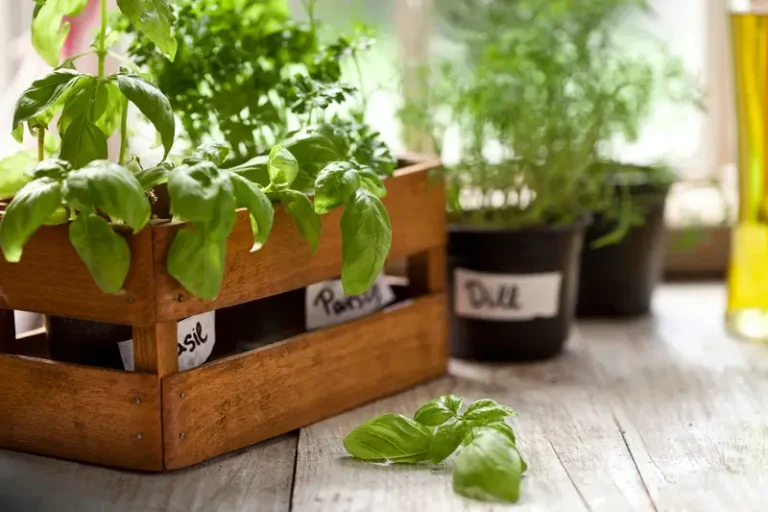
When establishing an indoor garden, it’s essential to meticulously plan and consider various factors to guarantee the flourishing growth of your plants.
Selecting the Right Containers
When choosing containers for your plants, selecting ones with proper drainage is essential to avoid waterlogging, which can harm the plant’s health. Pots with drainage holes and saucers are ideal for indoor gardening, allowing excess water to escape and protecting your surfaces.
Using Proper Soil
Indoor plants need to be potted in soil that drains effectively to ensure they stay healthy. It’s best to use a premium potting mix specifically formulated for indoor plants, as these blends usually contain materials such as peat moss, perlite, and vermiculite. These elements support adequate drainage and aeration, establishing an ideal setting for your indoor plants to flourish.
Providing Adequate Light
Light is a critical factor for indoor gardening. Place your plants near windows or use artificial grow lights to provide the necessary light levels. It’s essential to consider each plant species’ light requirements carefully to ensure they receive the specific amount of light they need for optimal growth and health.
Caring for Your Indoor Plants
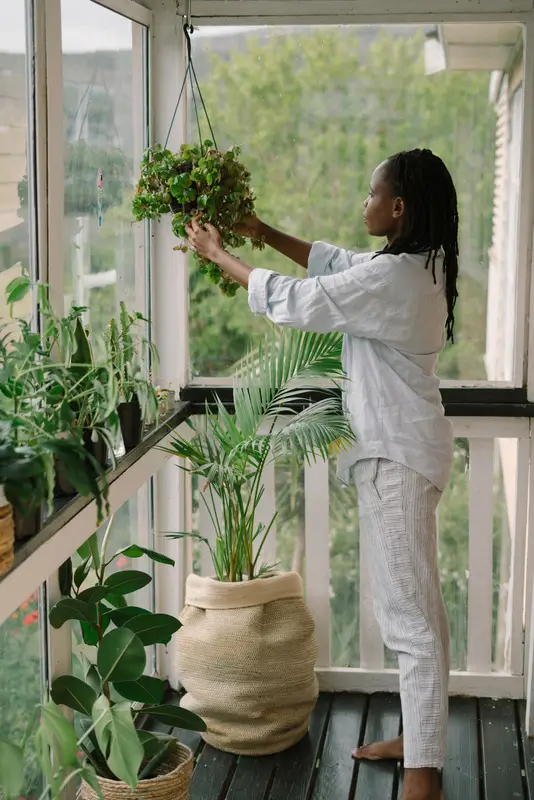
Proper care is essential for your indoor garden to ensure the well-being and strength of your plants. By following these tips, you can ensure your plants receive the right amount of water, proper fertilization, and necessary pruning to thrive and flourish.
Watering Techniques
Recognizing that watering requirements differ from one plant species to another is essential to ensuring the health of your plants. As a general guideline, check the soil moisture by feeling the top inch—if it’s dry, it’s time to water. When watering your plants, use room-temperature water and water them generously until you see water starting to drain from the bottom of the container; this will ensure that the entire root system is adequately hydrated.
Fertilizing Your Plants
Regular fertilization is essential to support indoor plants’ growth. During the growing season, it’s best to use a balanced, water-soluble fertilizer and apply it every four to six weeks to promote healthy plant growth. Avoid over-fertilizing, as this can affect your plants rather than benefit them. Monitor your plant’s specific needs and adjust the fertilization schedule as needed.
Pruning and Maintenance
Regular pruning is essential to maintaining your plants’ shape and vitality. It involves carefully removing dead or yellowing leaves and trimming overgrown branches to stimulate fresh growth. Additionally, inspecting the plants for any signs of pests or diseases and taking quick action to resolve any detected issues is essential.
Creative Ideas for Indoor Gardening
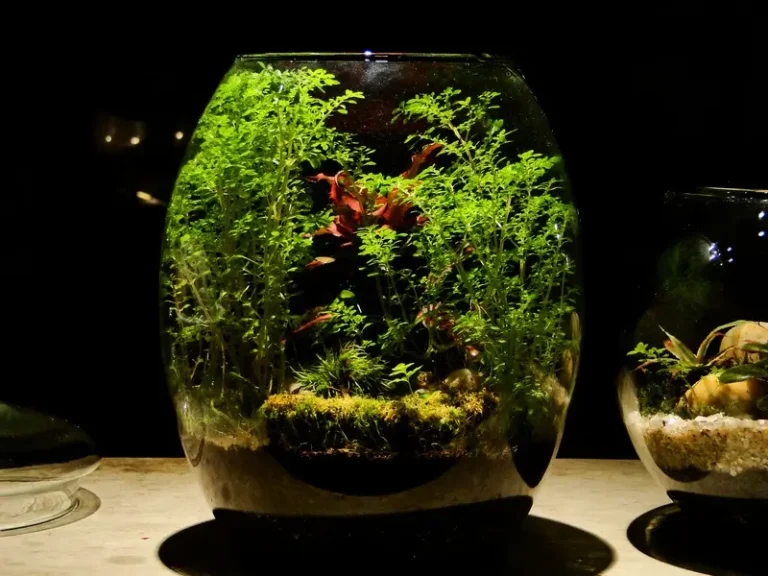
Indoor gardening allows for creativity and innovation. Explore these creative ideas to add a unique touch to your indoor garden.
Vertical Gardens
Maximize space by creating vertical gardens using wall-mounted planters, hanging baskets, or trellises. Vertical gardens are a fantastic choice for individuals who want to enjoy gardening but have limited space. These gardens maximize space and provide an opportunity to create breathtaking and visually captivating displays.
Terrariums
Terrariums are delightful miniature gardens carefully enclosed in glass containers. They are perfect for showcasing small, low-maintenance plants such as succulents and air plants, creating a charming display of nature within a limited space. Terrariums are straightforward to generate and maintain, making them an excellent choice for those new to the process.
Indoor Herb Gardens
Cultivate an indoor herb garden to bring the delightful and savory flavors of fresh, homegrown herbs into your kitchen. Herbs like basil, mint, and rosemary thrive indoors and can be quickly grown on windowsills or kitchen counters.
Overcoming Common Challenges in Indoor Gardening
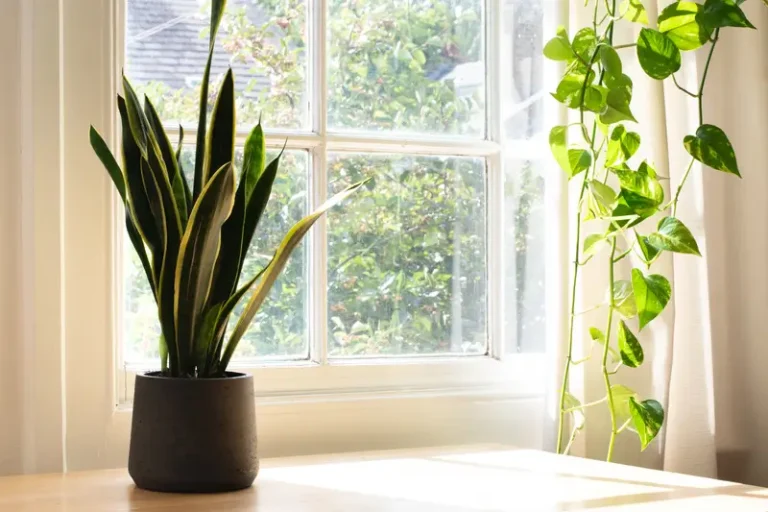
Indoor gardening can present unique challenges, but with the right strategies, you can overcome them and enjoy a thriving indoor garden. Overcoming these challenges will make you feel resilient and determined, adding to the satisfaction of your indoor gardening journey.
Dealing with Low Light
Indoor gardening often presents the challenge of dealing with low-light conditions. To address this issue, consider selecting plants that thrive in low-light environments, utilizing artificial grow lights as needed, and strategically placing plants near windows to optimize their access to natural light.
Managing Humidity
The air in indoor spaces can lack moisture, which poses a challenge for plants that thrive in humid conditions. To address this, you can boost the humidity by employing a humidifier, placing plants on trays filled with water and pebbles to create a makeshift humidity tray, or clustering plants together to create a small microclimate with higher humidity levels.
Preventing Overwatering
Overwatering is a frequent mistake in indoor gardening that can harm your plants. To avoid this, let the top inch of the soil dry out before watering again. Using pots with good drainage is essential so excess water can escape easily. You can also use a moisture meter to measure the moisture levels in the soil accurately.
The Joy of Indoor Gardening
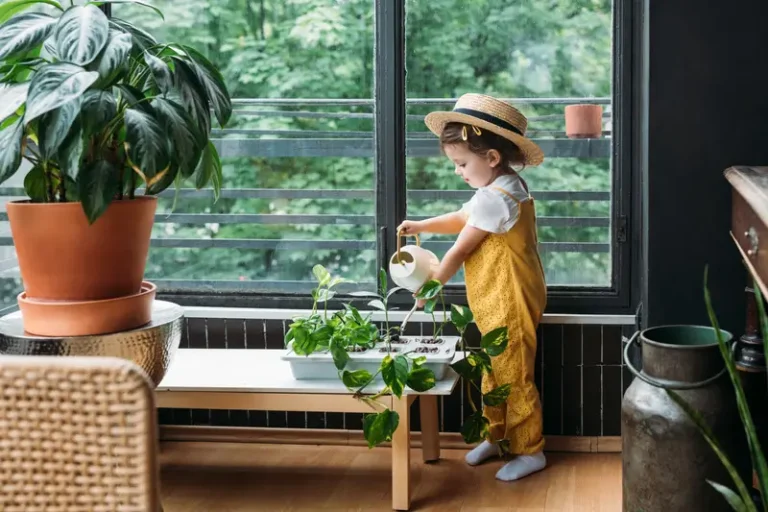
Engaging in indoor gardening is a gratifying and satisfying hobby that benefits enthusiasts. It allows you to create a green oasis within your home, connecting to nature and enhancing your living environment. Whether growing air-purifying plants, cultivating herbs, or designing creative plant displays, indoor gardening brings joy and tranquility to your daily life.
Connecting with Nature
Indoor gardening offers a beautiful opportunity to bring the beauty of nature into our homes, particularly in bustling urban areas. Introducing plants into indoor spaces can cultivate a tranquil ambiance, alleviate stress, and enhance our happiness and health.
Personal Growth and Learning
Caring for indoor plants can be a deeply fulfilling experience that presents countless chances for self-improvement and acquiring new knowledge. Each plant has specific needs, and taking the time to understand and cater to these requirements fosters patience, keen observation, and honed problem-solving skills.
Creating a Sustainable Home
Engaging in indoor gardening is an excellent way to contribute to a sustainable lifestyle actively. It can significantly enhance the air quality within your living space, alleviate stress, and boost your overall well-being. Incorporating indoor gardening into your home allows you to introduce the advantages of nature, resulting in a more friendly and healthier living environment.
FAQ
What are the best plants for indoor gardening?
When it comes to indoor gardening, you have various plant options. Low-light plants like snake plants are ideal for spaces with minimal natural light, while high-light plants like succulents thrive in well-lit areas. Consider air-purifying plants like spider plants to improve your home’s air quality.
How can I improve air quality with indoor plants?
Plants such as Boston ferns, peace lilies, and pothos have earned a reputation for purifying the air, making them appropriate choices for improving indoor air quality. These plants effectively filter out pollutants, thus creating a healthier and more pleasant indoor environment.
What are some creative and valuable ideas for indoor gardening?
Vertical gardens, terrariums, and indoor herb gardens are creative methods for integrating greenery into your living space while maximizing limited space.
How do I manage humidity levels for indoor plants?
To increase humidity levels for indoor plants, use a humidifier, place plants on trays with water and pebbles, or group plants together.
What are common challenges in indoor gardening, and how can I overcome them?
Dealing with less-than-ideal growing conditions can take time and effort. Issues like inadequate lighting, dry air, and too much water can hinder plant growth. To overcome these challenges, consider using specialized grow lights to provide the right light, increasing humidity levels to create a more favorable environment, and ensuring that your plants have proper drainage to avoid overwatering.
How can indoor gardening contribute to a sustainable home?
Indoor gardening improves air quality, reduces stress, and promotes overall health, creating a sustainable and healthier living environment.
Conclusion
Indoor gardening is an outstanding way to bring nature inside, transforming your living space into a green sanctuary. You can enjoy the unlimited benefits of indoor gardening by choosing the right plants, thoughtfully setting up your indoor garden, and providing proper care. Embrace creativity and overcome challenges to cultivate a thriving indoor garden that enhances your home and well-being. Whether you’re an experienced or a beginner, indoor gardening offers a rewarding experience.

